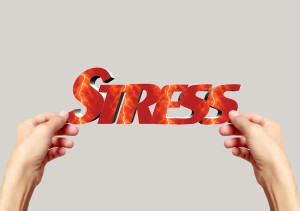 Since 2007, the American Psychological Association (APA) has commissioned an annual nationwide survey as part of its Mind/Body Health campaign to examine the state of stress across the country and understand its impact. The survey is called Stress in America, and is considered our best stress barometer. The Stress in America™ survey measures attitudes and perceptions of stress among the general public and identifies leading sources of stress, common behaviors used to manage stress and the impact of stress on our lives. The results of the survey draw attention to the serious physical and emotional implications of stress and the inextricable link between the mind and body.
Since 2007, the American Psychological Association (APA) has commissioned an annual nationwide survey as part of its Mind/Body Health campaign to examine the state of stress across the country and understand its impact. The survey is called Stress in America, and is considered our best stress barometer. The Stress in America™ survey measures attitudes and perceptions of stress among the general public and identifies leading sources of stress, common behaviors used to manage stress and the impact of stress on our lives. The results of the survey draw attention to the serious physical and emotional implications of stress and the inextricable link between the mind and body.
In the book, The End of Stress: Four Steps to Rewire Your Brain, the author, Don Joseph Goewey writes, “In its most recent survey, the APA concluded that the data portrays a picture of high stress and ineffective coping mechanisms that appear to be ingrained in our culture, perpetuating unhealthy lifestyles and behaviors for future generations.” The goal of Goewey’s book is to break that chain by providing a clear path for resolving this crisis once and for all. In his research, Goewey says the first thing he learned was that there are two major brain systems that determine the degree to which you will actualize the brain power needed to succeed at life.
In this blog post, I’ll include the names of both these brain systems, while also giving you a much better understanding of how they function within the body. To help you better understand, the following paragraphs use precise language taken from the introductory paragraphs of Goewey’s book, The End of Stress: Four Steps to Rewire Your Brain.
The first system is called the higher brain. Its proper name is the prefrontal cortex, and much of what we define as human intelligence is generated in this part of the brain. Goewey says, the higher brain invented art, music, science, agriculture, engineering, commerce, government, and lots of other things. It is also where the brain’s chief executive has its office, performing the executive functions that produce the plans and strategies that achieve goals. Executive functions draw on all the higher-order cognitive skills that question perceptions, analyze facts, adapt to change, and integrate information– delineating and prioritizing the logistics that move plans forward. Executive functions also take the creative insight generated by the right brain and translate it into practical innovation.
The second system is the lower or primitive brain, which actually inhibits your potential for success. The lower brain is where the stress response system resides, and the stress response system, as well as much of the primitive brain, is governed by the brain’s fear center, the amygdala. The amygdala plays a substantial role in negative mental states such as distress, aggression, anxiety, depression, and all those emotions that fall under the heading of fight, flight or freeze.
The amygdala cannot distinguish a real and present danger from something you misperceive as a threat. Its intelligence is reactive, not analytic. It invites the higher brain to weigh in on a potentially threatening situation only if its a new experience. Goewey says, when your nervous system senses any kind of threat, a signal is sent to the thalamus (a kind of neurological switchboard) and then relayed to the amygdala to activate an aggressive or defensive reaction. The sequence from threat to fear response happens in a knee-jerk fashion at lightning speed and occurs outside of conscious awareness. The amygdala is a survival system, which means it doesn’t take chances. Its motto is “He who hesitates is dead.” Thus, it’s programmed to shoot first and ask questions later. When there is a real and present danger, such as a coiled rattlesnake on the path, the speed of the amygdala works to increase the odds of living another day.